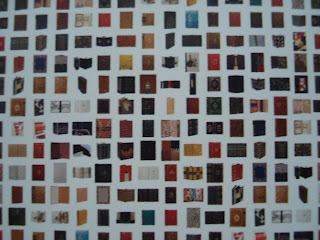 As places of learning, intended for the formation of clergy, Great Seminaries were also known for their cultural heritage. That is, if history had not been too unkind. And in the case of Tournai, it hasn’t.
As places of learning, intended for the formation of clergy, Great Seminaries were also known for their cultural heritage. That is, if history had not been too unkind. And in the case of Tournai, it hasn’t. On 10 November 2008 the Great Seminary is celebrating its 200th year in the same premises since 1808. It was founded thanks to an obstinate bishop, François-Joseph Hirn, originally from
The premises had then seen at least 3 previous owners, and 2 centuries of construction and restauration. At the end of the 16th century, the Jesuits organised a college and a noviciate in them. When the order was abolished in 1773, the buildings remained empty. A few years later, the canons regular were the new owners, until they had to vacate in 1794 and give way to an administrative office under the French republic.
The Great Seminary today can take pride in a library of more than 100,000 volumes, comprising medieval manuscripts and archival documents, incunables, etchings, and many precious bindings. And one of its abbots in the 20th century took care to establish a small museum for several artefacts, including oil panels.
The collections mostly have religious provenances. A few go back to the Jesuits and the canons regulars, but most were the scattered holdings of other abolished religious institutions in and around Tournai. For these artefacts, the foundation of the Great Seminary, not long after the abolishment of religious orders in general, proved fortuitous.
The notes on manuscript, etchings, bindings and rare book holdings have been authored by P. Bogaert osb, Annie De Coster, J.-B. Lebigue, J. Leclercq-Marx, E. Livens, L.Reynhout, F. Tixier, Dominique Vanwijnsberghe, Renaud Adam, Ph. Desmette, and A. Delvingt.
Details: Séminaire de Tournai, Rue des Jésuites 28, 7500 Tournai (Doornik). Press release to be obtained by Monique Maillard-Luypaert, curator of the Great Seminary Library. On 15 and 16 November 2008, Mrs Maillard will be present at a cultural event called Tournai La Page (Halle aux draps, Tournai).
Book: Monique Maillard-Luypaert, et al., Séminaire de Tournai. Histoire – Bâtiments – Collections.


